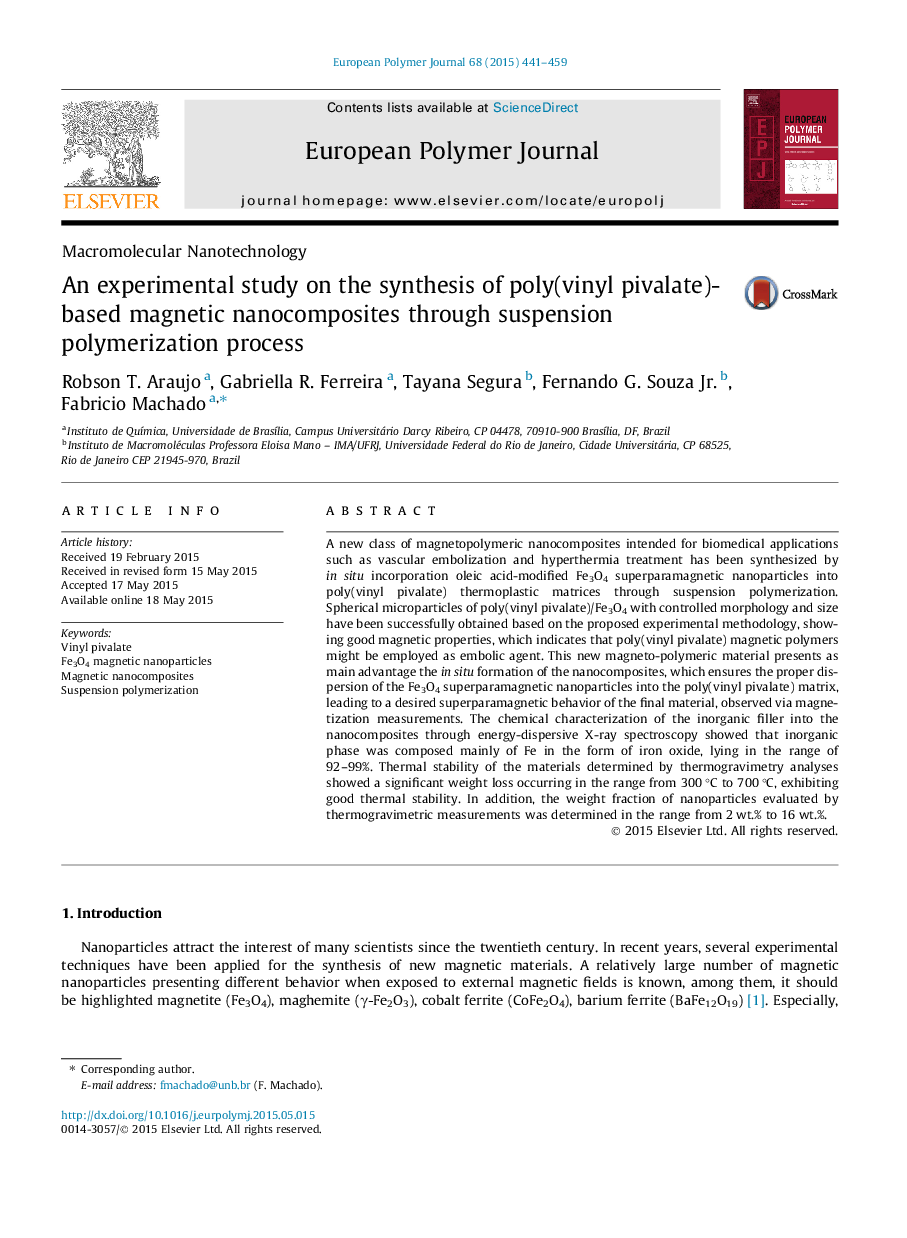| کد مقاله | کد نشریه | سال انتشار | مقاله انگلیسی | نسخه تمام متن |
|---|---|---|---|---|
| 1395134 | 1501367 | 2015 | 19 صفحه PDF | دانلود رایگان |
• Magnetic poly(vinyl pivalate)/Fe3O4 with controlled spherical morphology were obtained.
• Polymer microparticles exhibiting superparamagnetic behavior were successfully synthesized.
• Micro-sized magnetic polymer particles exhibited good thermal stability.
• Surface-modified Fe3O4 nanoparticles were properly dispersed into the thermoplastic matrix.
A new class of magnetopolymeric nanocomposites intended for biomedical applications such as vascular embolization and hyperthermia treatment has been synthesized by in situ incorporation oleic acid-modified Fe3O4 superparamagnetic nanoparticles into poly(vinyl pivalate) thermoplastic matrices through suspension polymerization. Spherical microparticles of poly(vinyl pivalate)/Fe3O4 with controlled morphology and size have been successfully obtained based on the proposed experimental methodology, showing good magnetic properties, which indicates that poly(vinyl pivalate) magnetic polymers might be employed as embolic agent. This new magneto-polymeric material presents as main advantage the in situ formation of the nanocomposites, which ensures the proper dispersion of the Fe3O4 superparamagnetic nanoparticles into the poly(vinyl pivalate) matrix, leading to a desired superparamagnetic behavior of the final material, observed via magnetization measurements. The chemical characterization of the inorganic filler into the nanocomposites through energy-dispersive X-ray spectroscopy showed that inorganic phase was composed mainly of Fe in the form of iron oxide, lying in the range of 92–99%. Thermal stability of the materials determined by thermogravimetry analyses showed a significant weight loss occurring in the range from 300 °C to 700 °C, exhibiting good thermal stability. In addition, the weight fraction of nanoparticles evaluated by thermogravimetric measurements was determined in the range from 2 wt.% to 16 wt.%.
Figure optionsDownload as PowerPoint slide
Journal: European Polymer Journal - Volume 68, July 2015, Pages 441–459
